#folk medicine
Photo


polish villages and elder (sambucus nigra); practical uses and folk beliefs:
• in polish folk medicine, leaves, berries, and flowers alike were used in multiple ways - for humans but for animals as well. for example, pigs suffering from erysipelas would be treated with compresses from elder leaves.
• for humans, a plethora of illnesses would be treated with elder: cough, stomach and bladder issues, joint pain, and even insomnia, asthma, and various emotional or psychological states. for example, “quiet children,” believed to be charmed, would be given elder infusions.
• the berries were also used to make soup: they’d be boiled with sugar and cream and served with potatoes. variations of this soup are still popular today in some places.
• it was recorded in some villages that women would make the ink required for school from elder; it was also used to make multiple types of toys and small instruments for children, such as popguns, whistles and folk pipes.
• ash from the elder would be poured over spots believed to bear the marks of devil activity as a way to cleanse them.
• in some villages it was believed that an elder growing by the house or the barn will protect it from witches and from lighting, or bring good luck to the household.
• you can sleep safely in the shade of the elder as snakes and worms and insects and all other crawling creatures will not dare go near it.
• while in many villages elder was believed to protect one from evil (most notably witches and devils) in many others it was believed to be demonic or evil in nature; it was called “evil” or “cursed” and believed to have evil spirits, illnesses, or devil(s) within.
• due to the belief that devil - or devils - reside between the roots of the elder, it was forbidden to cut it down or uproot it. the fear was that the evil would take revenge after such an act, or the place would be haunted, or bad luck and even death would fall upon the one who destroyed the tree.
• if an elder growing by the water was cut, the water itself would become poisonous. similarly, the consequences of ingesting raw and unripe elderberries were attributed to the influence of the evil spirit within it.
[sources: Komentarze do Polskiego Atlasu Etnograficznego t. VI. Agnieszka Lebeda: Wiedza i wierzenia ludowe, 2002. Podania, przesądy, gadki i nazwy ludowe w dziedzinie przyrody. Cz. 2, Rośliny. Bronisław Gustawicz, 1882.]
500 notes
·
View notes
Text
For my practitioners in the south: what's an old remedy, superstition or general "rule" you grew up with?
I remember the time I got stung by a wasp my dad pulled out his chewing tobacco, got it wet, put it on the sting and made me wear a band-aid over it. Was suppose to "pull out the sting". Can't say I remember if it worked or not, since it was so young.
#witchblr#folk witch#folk witchcraft#folk magic#folk medicine#southern folk magic#southern witchcraft#southern witch
490 notes
·
View notes
Text
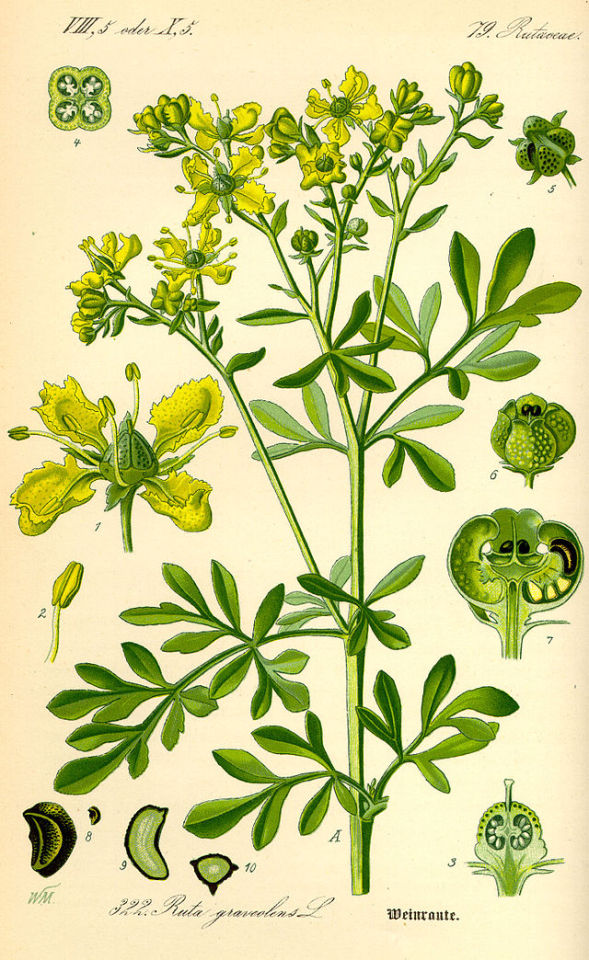
Ruda, Ruta graveolens רודה, is one of the most commonly used and venerated plants among Jewish communities.
"As a woman from Bulgaria recalled, "When we were sick, my mother used to perform livianos of lead. Also she used to boil mint, a little rue, a little lemon. All mixed up. She would boil it like a tea, strain it, and give it to us to drink for stomach ache. There we didn't go too much to the doctor, as we do here. Things of the house, they did things to us at home. All the medicines were prepared for different pains. Everything helped" (8).
Learn more about rue and the use of herbs in Judaism.
Read More
#jewish#judaism#jumblr#rue#ruda#herbs#herbalism#jewitch#jewitches#jewish magic#jewish herbalism#folk magic#folk medicine
504 notes
·
View notes
Text
LJS 470 is a collection of medical recipes, folk remedies, charms, and spells, including a Hebrew translation of John of Parma's medical treatise, Practicella. Written in Siena in 1533.
🔗:
#medieval#renaissance#manuscript#paper#hebrew#medicine#history of medicine#spells#charms#folk medicine#siena#italy#16th century#book history#rare books
145 notes
·
View notes
Text
Holed Stones in English Folk Magic

Sources at the end
Stones with naturally occurring holes in them have many uses in magic all over the world. In England they have been used for protection and luck as well as in medicine. Holed stones are known by many different names, In England they have been and are known by numerous names such as Hag stones, Witch stones, Serpents'/Snakes' eggs, Adder stones, and Lucky stones. For the sake of clarity, I will be referring to them as ‘holed stones’.
Luck and Protection
Holed stones are used as amulets for protection against Hags, witches, faeries, and other spirits, when they are used in this way they are referred to as hag or witch stones. People would hang a holed stone above the door of their home or barn, and sometimes passageways within the home. People would also keep a small holed stone in a pocket for luck and protection.
Holed stones have also been known for being lucky, being worn around the neck for luck or tossed over the shoulder after spitting through the stone's hole to grant a wish. It was also said that is a person tied a holed stone to their house keys, those who resided in the home would be prosperous.
In communities where fishing and/or sailing was common the use of holed stones for protection was common, tying them to the bows of boats or inside of smaller rowing boats for protection while at sea. Holed stones were also used to protect against drowning, Christopher Duffin (2011) writes, “The coxswain of the Ramsay lifeboat [during 1929], also a fisherman by trade, always wore a small discoidal [holed] stone around his neck, threaded with copper wire. The amulet, passed down through three generations of fishermen, was credited with preserving the life of the wearer through terrible maritime circumstances.”
Medicine
As these holed stones protected against hags, witches, faeries, and other spirits they would often be used in medicine, as magic was often thought to be the cause of illness.
One of the illnesses holed stones were used to treat is ‘hag-riding’, in the book A Dictionary of English Folklore it is defined as “a frightening sensation of being held immobile in bed, often by a heavy weight pressing on one’s stomach or chest […] In folklore, it was thought of as a magical attack, though whether by demonic incubus, ghost, harmful fairy, or witch varied according to place and period.” (Simpson & Roud, 2003) Today hag-riding is understood to be sleep paralysis. To treat hag-riding a holed stone would be hung above the bed of the sufferer or, if the sufferer is an animal, placed in a stable.
This belief applied to both humans as well as other animals; hag stones were often used in the treatment of ill livestock. In Lancashire holed stones would be tied to the back of cows to protect them from all forms of harm, “self-holed stones, termed ‘lucky-stones,’ are still suspended over the backs of cows in order that they may be protected from every diabolical influence.” (Harland and Wilkinson 1873).
Sources:
Thwaite, A.-S. (2020). Magic and the material culture of healing in early modern England [Apollo - University of Cambridge Repository]. https://doi.org/10.17863/CAM.63593
Jacqueline Simpson & Steve Roud (2003). A Dictionary of English Folklore. Oxford University Press. https://www.oxfordreference.com/display/10.1093/oi/authority.20110803095941856
Vicky, King (2021, November 11). Hag Stones and Lucky Charms. https://www.horniman.ac.uk/story/hag-stones-and-lucky-charms/
Pitt Rivers Museum, Accession Number: 1985.51.987.1 https://www.prm.ox.ac.uk/collections-online#/item/prm-object-239947 (c) Pitt Rivers Museum, University of Oxford, Date Accessed: 21 January 2024
Adams, Thomas, fl. 1612-1653., 2013, A commentary or, exposition vpon the diuine second epistle generall, written by the blessed apostle St. Peter. By Thomas Adams, Oxford Text Archive, http://hdl.handle.net/20.500.12024/A00665
Christopher J. Duffin (2011) Herbert Toms (1874–1940), Witch Stones, and Porosphaera Beads, Folklore, 122:1, 84-101, DOI: 10.1080/0015587X.2011.537134
Photo source:
Harland, J., & Wilkinson, T. T. (1873). Lancashire Legends: Traditions, Pagents, Sports, & C. With an Appendix Containing a Rare Tract on the Lancashire Witches, & C., &c. G. Routledge. https://archive.org/details/cu31924028040057
File:Hag Stones (8020251781).jpg. (2023, February 2). Wikimedia Commons. Retrieved 04:11, January 26, 2024 from https://commons.wikimedia.org/w/index.php?title=File:Hag_Stones_(8020251781).jpg&oldid=729610598.
#folk magic#witch#witchcraft#English folk magic#folklore#folk medicine#hagstone#hag stone#pagan#witchblr#green witch#magika#magic#witches#occult#folk witchcraft#folk witch#cunning folk#image description in alt#charms#traditional magic#traditional witch#traditional witchcraft#i hope this isn't absolute crap#grimoire
47 notes
·
View notes
Text




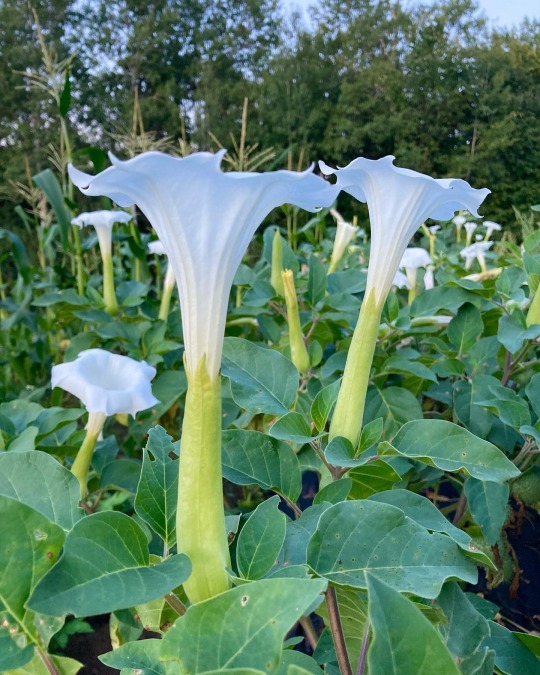


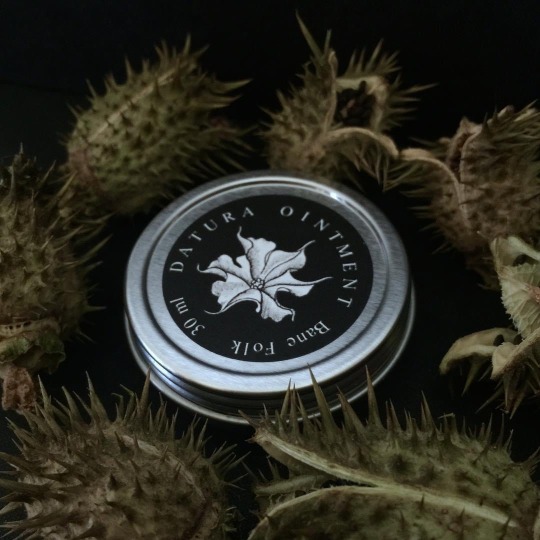
Last summer’s datura inoxia crop. I grow and harvest my own datura to make a herbal salve. I’ve been making datura ointment for over a decade. Most people use it for medicine for severe pain, inflammation, insomnia, and anxiety rather than as a flying ointment. It’s my mom’s favourite for her arthritis pain.
I’ve been growing datura for 15 years now. I fell in love after smelling my first fragrant trumpet flower and I’ve been a goner ever since. Datura has my heart and has always been kind to me despite her fearsome reputation. Don’t mess with her and she won’t mess with you.
#bane folk#datura#datura inoxia#sadadhatura#thornapple#poisonous plants#medicinal plants#poison path#poison as medicine#herbal salve#ointment#flying ointment#witches ointment#folk medicine#folk magic#folk herbalism
54 notes
·
View notes
Text
Scandinavian folk magic and medicine is diverse and varied, but
3
7
9
3x3
Thursday
Counterclockwise
Bodily fluids, hair, nail clippings
Fight fire with fire
601 notes
·
View notes
Text

Lonnelle Aikman - Nature's Healing Arts: From Folk Medicine to Modern Drugs - NGS - 1977 (photographs by Nathan Benn and Ira Block)
#witches#healers#occult#vintage#nature's healing arts#folk medicine#modern drugs#ngs books#national geographic society#lonnelle aikman#nayhan benn#ira block#1977
32 notes
·
View notes
Text
Anyone else follow blackforager for foraging tips in their fics? Just me? I'm a giant weirdo when it comes to research. I just read a 400 page book on folk medicine last night. Well, skimmed. Seems like most of the herbs help with a variety of ailments, most of them are rheumatism, kidney issues, digestive issues, "women's" issues... the prevalent coding for abortion seems to be to "bring on delayed courses". Seneca snakeroot was a popular plant (the root was used, steeped in water) used for a lot of things, including abortion. Another was copious amounts of red raspberry leaf tea. It's also used later in pregnancy to strengthen the uterus.
9 notes
·
View notes
Text
...anyone else remember when they told us to put Butter on Burns?
17 notes
·
View notes
Text
𝕸𝖚𝖌𝖜𝖔𝖗𝖙 𝖍𝖆𝖗𝖛𝖊𝖘𝖙 🌙

Artemisia vulgaris, along with the other "Artemisia" varieties, are plants linked to the lunar, feminine and nocturnal spheres. They're used in witchcraft especially for divination. For more "mundane" purposes, Artemisia vulgaris has been used for ages to calm menstrual pain.
Picture taken by me.
#witch#witchcraft#pagan#nature#magic#witchy#traditional witchcraft#magick#folk witch#folk witchcraft#folk magic#herbalist#herbs#green witch#grey witch#witchblr#tradcraft#folk medicine#tradwitch#witches of tumblr
79 notes
·
View notes
Text
2023 Reading Log, pt. 9

41. Encyclopedia of Folk Medicine by Gabrielle Hatfield. There are some A-Z encyclopedia style books that are interesting and easy reads. This is not one of them. Most of the entries are long lists of what remedies were used for a particular ailment, or what ailments were reputed to have been treatable by a particular remedy. The writing style is very boring and samey throughout, making it a chore to read. I do appreciate the appearance of scientific names when referring to plant remedies, with a question mark in the cases where a common name is used that can be applied to multiple plants. I do not appreciate how native American remedies are often an afterthought, drawn from a much more limited range of sources, and many times not even explaining what tribal tradition they belong to. This book would probably be a relatively useful resource for a research project, although not a one-stop shop. I do not recommend it, however, as a reading experience.

42. A History of the World Through Body Parts by Kathryn Petras and Ross Petras. This book is a historical miscellany, focusing on how human history has been influenced by, well, human organs. It was inspired by a quote by Pascal about Cleopatra’s nose, which is discussed. The book is broken into short chapters about a particular historical person, their body, and how it influenced their actions and legacy. The book is fine, but it is weirdly padded. Each chapter begins with a full page title, and infoboxes, some of which are only a paragraph long, get their own pages as well. So while I did enjoy this book, I do also kind of regret paying full hardcover price for it.
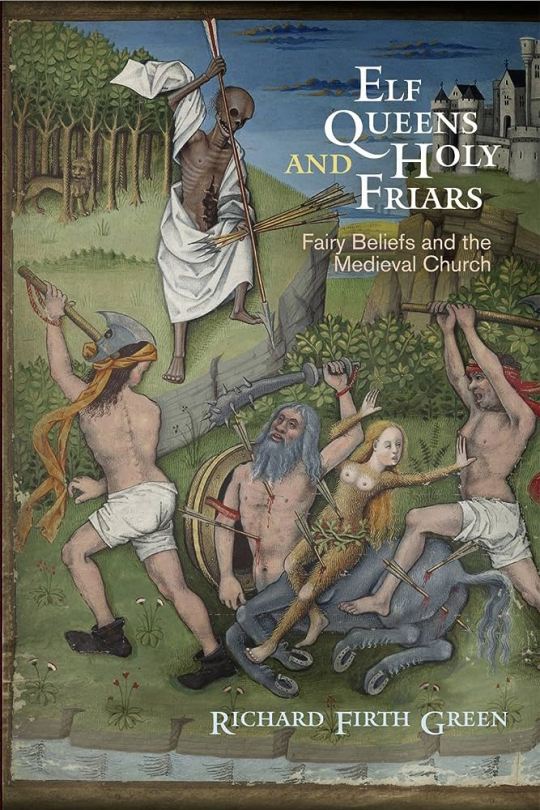
42a. Elf Queens and Holy Friars by Richard Firth Green. I was super intrigued by this book’s premise—that fairy belief in medieval Europe was seen as a threat by the Church to their cultural hegemony. Unfortunately, the author makes some idiosyncratic choices that make it literally impossible for me to read. Long passages from primary sources are quoted. If they’re in French, they’re translated. If they’re in Latin, they’re paraphrased. And if they’re in Middle English, they’re left to stand on their own. I don’t read Middle English or Latin. So this book seems to be written for a specialist audience only, and anyone interested in the topic without the language background can piss off, I guess.

43. The Strange Bestiary by Bruce R. Cordell, Monte Cook and Robert J Schwalb. I quite liked the bestiaries that Monte Cook Games put out for the Numenera game, so I figured I’d have a similarly high opinion of the bestiary for The Strange, the same company’s dimension hopping alternate reality game. This was not the case. For a system titled “The Strange”, the book is awfully mundane. In The Strange, there’s a Mad Science dimension, a Traditional Western Fantasy dimension, a Lovecraft dimension and a Gothic Horror dimension, which means that fairly uninspired versions of monsters pertaining to those tropes are the dominant contents of the book. There are a few monsters with original and interesting concepts, but they’re drowned out by things we’ve seen before for a dozen different systems.
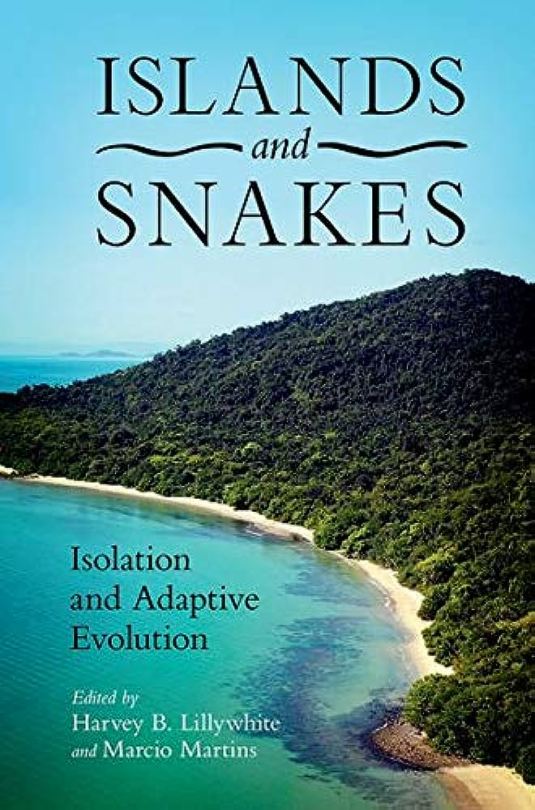
44. Islands and Snakes, edited by Harvey B. Lilywhite and Marcio Martins. This is an academic book, a collection of papers about the evolution and ecology of snakes on islands. After a general overview of the topic, most of the papers focus on one particular species or species complex. A significant chunk of the papers cover sea kraits, which are snakes I didn’t know much about; they’re eel specialists and more amphibious than other sea snakes, emerging onto islands to rest and digest, and laying their eggs in sea caves or other hidden humid areas. Other topics include the insular tiger snakes of offshore Tasmanian islands, the vipers of Milos Island off the coast of Greece, and the weirdly specialized, and unfortunately now dwindling, water moccasins of Seahorse Key in Florida.

45. Suggestible You by Eric Vance. This book is about the placebo and nocebo effects, hypnosis, and other ways that the brain can influence the body. The author comes at the topic from an interesting perspective. He grew up a Christian Scientist, and his parents told him the story of how their faith saved him from life-threatening illness when he was an infant. This loops back around to a discussion of implanted memories, and the instability of memory in general—he “remembers” the event despite being one year old, and in the third person, because of how many times he’s heard the story. Vance is an eager experimental participant, engaging in placebo trials for pain, getting himself professionally hypnotized, visiting acupuncturists and Christian Science healers, and even getting himself cursed.
#reading log#placebo#hypnosis#neuroscience#evolution#ecology#herpetology#snakes#monster book#fairy#european folklore#christianity#folk medicine#world history
14 notes
·
View notes
Text
"Many cultures have shared the belief that it is possible to transfer illness to other people or to animals. Before the understanding of germs became widespread, the transference of illness was perceived as an unnatural event. Pain and illness, for example, were often seen as being cast by an evil glance. Among Ukrainians in Alberta, the wax ceremony has been a culturally significant way of getting rid of evil eye, which is still feared by many people, especially the older generations.
During the wax ceremony, the pain is removed or flushed out from the body. It is transferred to an inanimate intermediary, water or wax. This is most clear in those cases where the water is discarded in some place where nobody will ever walk. This practice reduces the chances of illness being transferred to some unfortunate person."
The Word And Wax: A Medical Folk Ritual Among Ukrainians in Alberta by Rena Jeanne Hanchuk
#The Word And Wax by Rena Jeanne Hanchuk#ukrainian canadian#folk magic#folk healing#ceromancy#slavic folk magic#ukrainian canadian folk magic#slavic witchcraft#holy queue#folk medicine
65 notes
·
View notes
Photo

Folk Medicine
Sometimes the healers need healing.
Artist: Matt Cavotta
TCG Player Link
Scryfall Link
EDHREC Link
32 notes
·
View notes
Text

For reference for today's entry, this is what garlic flowers look like.
Collectively, things like garlic, onions, shallots, and other related plants are in the Allium family. Certain alliums are also cultivated as ornamental varieties, of which Lucy would almost certainly have been aware.
Since the flowers are described as white, and most garlic flowers were purple-hued, Lucy probably assumed that the professor had brought her some ornamental alliums, up until she smelled them.
Of note, garlic has a long history of use in both folk medicine and in medical research. These uses are part of the reason why it was a ward against various unholy creatures.
85 notes
·
View notes
Text

The oldest direct evidence of water lilies being used as a psychoactive drug dates to 6,000 BCE in ancient Egypt. The specific species was Nymphaea nouchali var. caerulea which has been found to contain nuciferine, an alkaloid normally found in lotuses (Nelumbonaceae), as well as other aporphine alkaloids that may covert to apomorphine in the body. Water lilies are soporific aka hypnotic. Hypnotic herbs are anti anxiety and help people fall asleep and stay asleep.
Source: “The oldest archeological data evidencing the relationship of Homo sapiens with psychoactive plants,” Journal of Psychedelic Studies, 2019.
Photo: Egyptian blue water lily (Nymphaea nouchali var. caerulea) from Wikimedia Commons.
#bane folk#blue lotus#Egyptian blue water lily#water lily#nymphaea#nymphaea caerulea#nymphaea nouchali var caerulea#nymphaeaceae#medicinal plants#poisonous plants#edible plants#psychoactive plants#soporific#hypnotic#sedative#folk medicine
12 notes
·
View notes